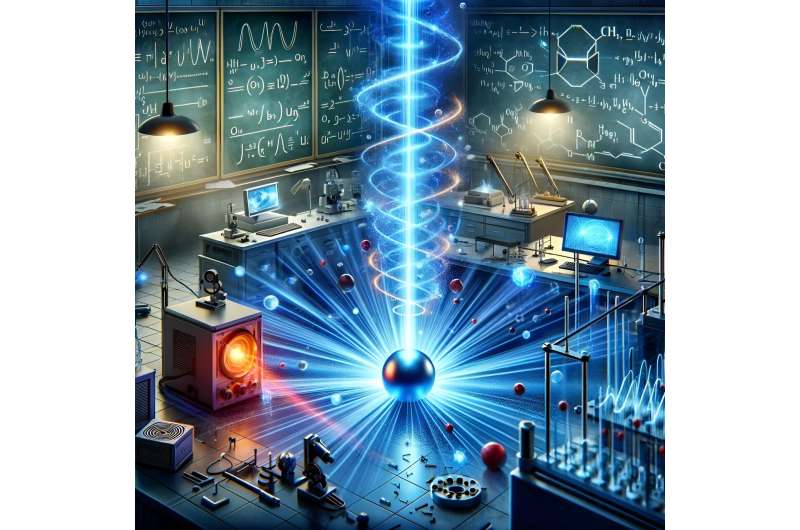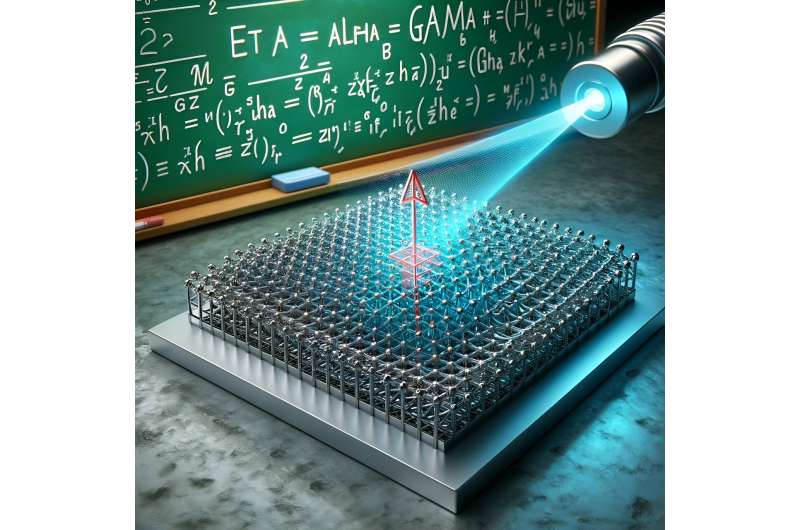This article has been reviewed according to Science X's editorial process and policies. Editors have highlighted the following attributes while ensuring the content's credibility:
fact-checked
peer-reviewed publication
trusted source
proofread
New insights on how light interacts with magnets for better sensors and memory tech

Professor Amir Capua, head of the Spintronics Lab within the Institute of Applied Physics and Electrical Engineering at Hebrew University of Jerusalem, announced a pivotal breakthrough in the realm of light-magnetism interactions. The team's unexpected discovery reveals a mechanism wherein an optical laser beam controls the magnetic state in solids, promising tangible applications in various industries.
"This breakthrough marks a paradigm shift in our understanding of the interaction between light and magnetic materials," stated Professor Capua. "It paves the way for light-controlled, high-speed memory technology, notably Magnetoresistive Random Access Memory (MRAM), and innovative optical sensor development. In fact, this discovery signals a major leap in our understanding of light-magnetism dynamics."
The research challenges conventional thinking by unraveling the overlooked magnetic aspect of light, which typically receives less attention due to the slower response of magnets compared to the rapid behavior of light radiation.
Through their investigation, the team unraveled a new understanding: the magnetic component of a rapidly oscillating light wave possesses the capability to control magnets, redefining the principle of physical relations. Interestingly, an elementary mathematical relation that describes the strength of the interaction was identified and links the amplitude of the magnetic field of light, its frequency, and the energy absorption of the magnetic material.
The discovery is tightly linked to the realm of quantum technologies and combined principles from two scientific communities that so far had little overlap. "We arrived at this understanding by using principles that are well established within the quantum computing and quantum optics communities but less so in the spintronics and magnetism communities," said Capua.
The interaction between a magnetic material and radiation is well established when the two are in perfect equilibrium. However, the situation where there is both radiation and magnetic material that are not in equilibrium has so far been described very partially.

This non-equilibrium regime is at the core of quantum optics and quantum computing technologies. From our examination of this non-equilibrium regime in magnetic materials, while borrowing principles from quantum physics, we have underpinned the fundamental understanding that magnets can even respond to the short time scales of light. Moreover, the interaction turns out to be very significant and efficient.
"Our findings can explain a variety of experimental results that have been reported in the last 2-3 decades," explained Capua.
"This discovery has far-reaching implications, particularly in the domain of data recording using light and nano-magnets," said Professor Capua. "It hints at the potential realization of ultra-fast and energy-efficient optically controlled MRAM and a seismic shift in information storage and processing across diverse sectors."
Moreover, in tandem with this discovery, the team introduced a specialized sensor capable of detecting the magnetic part of light. Unlike traditional sensors, this cutting-edge design offers versatility and integration across various applications, potentially revolutionizing sensor and circuit designs utilizing light in diverse ways.
The research was conducted by Benjamin Assouline, a Ph.D. candidate in the Spintronics Lab, who played a vital role in this discovery. Recognizing the potential impact of their breakthrough, the team has applied for several related patents.
More information: Benjamin Assouline et al, Helicity-dependent optical control of the magnetization state emerging from the Landau-Lifshitz-Gilbert equation, Physical Review Research (2024). DOI: 10.1103/PhysRevResearch.6.013012
Journal information: Physical Review Research
Provided by Hebrew University of Jerusalem





















